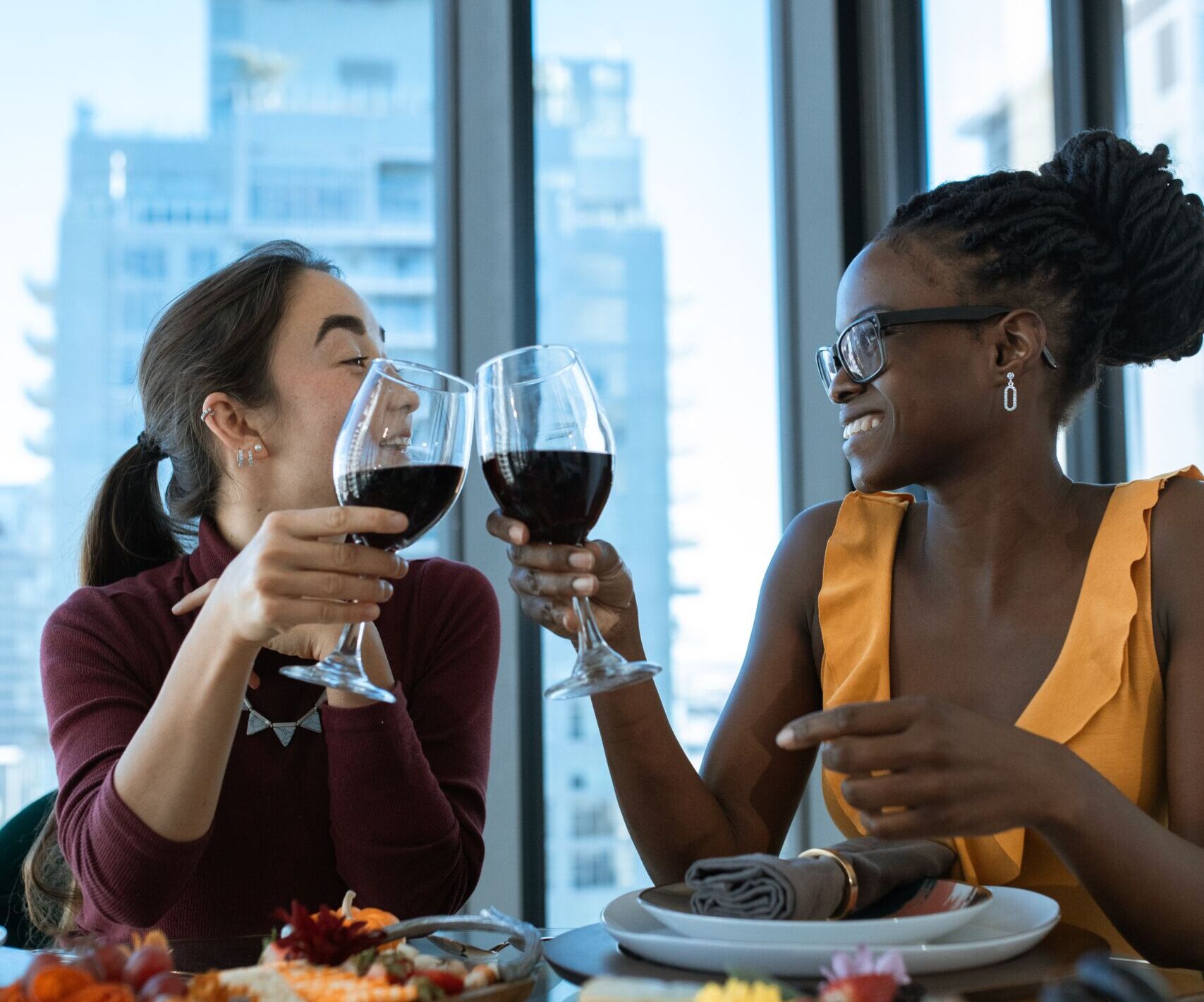Last updated: January 9, 2023
Millennials are drinking less wine. And the majority of them are in their best buying years. At the same time, as boomer get older and retire, they’re drinking less wine.
These trends will drive down revenue for many wineries over the next several years. To ensure positive sales growth, brands should optimize their marketing to attract millennials and young consumers.
Some Context
How bad is the situation? Let’s compare millennials to boomers. The oldest millennials are in their early 40s. This is an important milestone, because at this age, consumers typically have higher incomes to spend on purchases like wine. But a survey of U.S. adults shows that consumers aged 21-39 most frequently cited cocktails as their drink of choice. Consumers aged 40-60 mostly preferred beer. Only those over 60 preferred wine!1
Similarly, when asked what they would bring to a party to share, older millennials (namely consumers aged 35-44 ) prefer to bring beer slightly more to wine. The results are bleaker for younger consumers aged 21-34, who would pick beer, spirits, and hard seltzer over wine.
Boomers on the other hand – especially those above 65 – are much more likely to bring wine.2
In the State of the Wine Industry 2022 report, Rob McMillan summarizes the problem clearly:
In prior reports, we noted that the falling interest in wine among younger consumers, coupled with the encroaching retirement and decreasing wine consumption of baby boomers, poses a primary threat to the business. That issue has yet to be addressed or solved, and the negative consequences are increasingly evident.
3 Recommendations for Wineries to Attract Millennials and Younger Consumers
So what can wineries do to attract more millennials? The key is to better connect with millennial values. Millennials are, after all, different from boomers, and will be motivated by different messages. We lay out three specific focus areas for wineries to better connect with millennials and attract them to your brand. This includes showing how your winery:
1 Contributes to society
2 Is eco-friendly
3 Provides unique individual experiences
The important part is to be authentic and actually live up to these interests. But for many wineries, there is little to change about their practices – they just need to better market what they’re already doing.
1
Show How Your Winery Contributes to Society
Company values matter for millennials and younger consumers. Social responsibility and a positive, cause-based mission can be more powerful than price in these consumers’ purchasing decisions. What key messages can wineries incorporate into their branding and marketing to show their contributions to society?
Wineries can be strong models for diversity, equality and inclusion (DEI)
Many wineries are owned, operated, and led by women. The industry also creates labor opportunities for migrant communities on and off the vineyard. This is important for two reasons. First, millennials want to see more progress toward DEI. Wineries can serve as a powerful model for this vision. Second, millennials in the U.S. are more diverse and non-white than boomers. They will want to see companies that look more like them. Wineries that have already made progress in diversifying their tasting room staff should show that.
Wine clubs promote community and togetherness
In an increasingly digital world where social interactions are declining, wine clubs and tasting rooms offer people opportunities to come together and feel a sense of community around shared interests. This increased social interaction has positive impacts like decreasing loneliness and exposing people to a diversity of perspectives and views. Wineries should move away from the image of exclusivity, and instead embrace an image of openness that caters to all.
There’s still a long way to go and plenty of room for progress in the wine industry. But the industry benchmarks above other industries – and brands should highlight to consumers that this is a high priority.
2
Show How Your Winery is Eco-friendly
In addition to social good, younger generations want to see brands do their part to take care of the environment. As literal caretakers of land, this is an easy box for most wineries to tick. It’s just a matter of honest, authentic, and clear marketing.
Wineries reuse, reduce, and recycle to promote eco-friendly operations
Reuse, reduce, and recycle – these practices are so integrated in everyday winery operations that we may be taking them for granted. Barrels get reused, bottles and glassware are recycled, corks are being increasingly replaced by more eco-friendly twist-offs.
Sustainable farming on the vineyard protects the environment
Vineyards use renewable energy (like solar), water conservation methods (like drip-irrigation), and composting. LEED Certifications are driving building adjustments. Wine brands need to These practices reflect social responsibility and environmental friendliness. Importantly, they will also resonate with more climate-conscious millennials and younger consumers.
All that’s left to do for wineries is to amplify what they’re doing to reduce their impact on the environment. Ask yourself:
- What is my brand doing to make the world better?
- How can I authentically spotlight this in a way that millennials and younger consumers care about?
3
Show How Your Winery Provides Enriching Experiences
Millennials are less materialistic, and more interested on brands, products, and experiences that improve their mental health and wellbeing. Wineries offer natural settings, healthier drink options, and enriching experiences that can open consumers minds to the world – much of this will resonate with millennial and younger consumers. While current research on the benefits of wine for heart health remain mixed, there are still other ways your brand can appeal to millennials:
More time in idyllic nature can improve mental health
Wineries and vineyards are often in pastoral settings. Much research has shown how spending more time in nature is good for mental health. The problem is that most winery websites over-use tired and predictable content. Even when pictures are original, they feel “stock”. Most winery websites all look the same, and draw on the same aesthetic. Wineries should instead focus on how to stand out – emphasize what it is about your winery and vineyard setting that is unique and special. Social media and other marketing should show off what it is about your location that is special.
Wine is a gateway to experience the world
Millennials are more likely to be interested in travel and cosmopolitan experiences. Appeal to millennials’ cosmopolitan values and interests by leaning more into stories of grapes and wine that have proverbial (and terrestrial!) roots abroad. Leaning into the international histories and stories of wine not only piques consumers’ interests, but can scratch the itch of wanting to travel and get exposed to new cultures. It can also tap into their nostalgia, offering them an opportunity to enjoy at home the pleasures they experienced abroad.
Bonus: Wine may be the healthier alcohol option
Wine has historically been linked to better heart health. While the current research on this is mixed, there are objective qualities about wine that make it healthier than other alcohols, including that it’s lower in calories, and less prone to binge. At the very least, spotlighting organic viticulture practices, farm-to-table, local sourcing, and natural ingredients will resonate with a more health-conscious, community-oriented demographic.
(See our other post on how to better market your wine brand by focusing on self-improvement.)
Why These Marketing Tactics Will Help Attract Millennials
The new generations of wine drinkers have different values. Millennials and younger consumers, in particular, want to see brands doing more to promote social justice and help the environment. They also care more about mental health and experiences than purchasing physical items.
Wineries that can tap into these values and communicate more effectively about what they’re doing will stand out and successfully attract younger consumers.
Again, these aren’t just marketing “hacks” – it’s important for wineries to adopt these methods and market them authentically. Millennials and younger generations are marketing savvy and skeptical – they’ll recognize and reject lip-service and “greenwashing”.
The important part is to be authentic and actually live up to these interests. But for many wineries, there is little to change about their practices – they just need to better market what they’re already doing.
We Can Help!
Trellis Analytics can help you create an authentic and compelling digital marketing strategy that connects with millennial values. The upshot? None of this requires deceptive marketing “hacks”. Wineries just need to use the levers that already exist.
We can help you be creative in your messaging, and highlight the items above in a way that feels organic and authentic.
We’re excited to learn more about your challenges and help you modernize your winery’s online presences. Schedule a free consultation call using the button below or send us a message.
References
[1] Harris Poll survey data, visualized here: https://www.forbes.com/sites/lizthach/2022/01/19/us-wineries-still-not-doing-enough-to-attract-younger-multi-cultural-consumers-svb-2022-report-says/?sh=7b2f9a187f67




